I made two patches for OpenCL (OCL) shot code. One patch refactors the existing SPH (Sphere) shot code, and the another patch implements EHY (Elliptical Hyperboloid) shot code.
Background Research
Development Status
| Milestone |
Description |
Patch |
Status
|
| M0.1 |
fix OCL SPH shot routine compilation errors. |
#341 |
TRUNK
|
| M0.2 |
EHY shot routine in OCL. |
#346 |
TRUNK
|
|
|
|
|
| M1 |
ELL and ARB8 shot routines in OCL. |
#370 |
TRUNK
|
| M2 |
refactor dispatcher, shoot, optical renderer to process many rays in parallel in C when rendering an image or block. |
|
BRANCH
|
| M3.1 |
grid spatial partitioning in C. |
#379 |
BRANCH
|
| M3 |
grid spatial partitioning in OCL. |
#379 |
PATCH
|
| M4 |
GPU side database storage of OCL implemented primitives. |
#392 |
TRUNK
|
| M5 |
port compute intensive or critical parts of the dispatcher, boolean evaluation, optical renderer to OCL. |
|
BRANCH
|
| M6 |
TOR and TGC shot routines in OCL. |
#393 |
TRUNK
|
| M6.1 |
REC shot routine in OCL. |
|
TRUNK
|
| M7 |
BOT shot routine in OCL. |
|
-
|
The ARB8, EHY, ELL, SPH, REC, TOR, TGC, shot routines are in SVN trunk.
Development Phase
Week 1 : 25-31 May
- Created some example .g files in mged for the primitives to be implemented this week. The Quick Reference Card proved to be quite useful.
- Do the matrix ops for EHY (Elliptical Hyperboloid) in the OCL side.
- Made patch for ELL (Generalized Ellipsoid) and ARB8 (Arbitrary Polyhedron) OCL shots.
- M1 complete: ELL, ARB8 shot routines in OCL.
- Tried out a bunch of code browsing tools (cscope, LXR, doxygen, etc). The NetBeans IDE seems the most promising.
Week 2 : 1-7 Jun
- Read code to better understand the main rendering loop. It seems to be something like this:
do_frame() → do_run() → worker()* → do_pixel()* → rt_shootray()* → rt_*_shot()
- The code is recursive (which is problematic for OCL). I'll work on a simplified version of the rendering loop which only does the primary rays in C as a first approach. After I get the non-recursive parallel friendly C code I'll work on the OCL port.
- Updated project proposal on Google Melange.
- SVN r65153 fails to compile with a bogus error of an unused variable that's actually being used its just that GCC 4.9.1 is too dumb to figure that out.
- Made simple ray generation code in C.
- Made simple frame buffer write code in C.
- Made simple diffuse shading code in C.
Week 3 : 8-14 Jun
- Added the main boolean weaving code to our minimal renderer.
- Eliminated some gotos and made the code more thread safe.
- The simple renderer patches are in the mailing-list.
Week 4 : 15-21 Jun
- Added OpenMP compile support. Use OpenMP constructs to launch the rendering threads. This work still has some bugs in it.
- Alpha M2 patch. in mailing-list.
- Read code to better understand the main spatial partition construction routines. They seem to be something like this:
rt_prep_parallel() → rt_cut_it() → rt_nugrid_cut()
- We need something less complex that is more amenable to porting to OCL. So I will be implementing the Lagae & Dutré compact grid construction algorithm published at EGSR. First I will program in ANSI C then I will port the code to OpenCL.
- Started work on M3: grid spatial partitioning in OCL.
- ANSI C Lagae & Dutré grid construction code.
Week 5 : 22-28 Jun
- Took time off from the project to go to the CGI'15 conference.
Week 6 : 29 Jun-5 Jul
- GSoC Midterm Evaluations.
Weeks 7-8 : 6 Jul-12 Jul, 13 Jul-19 Jul
- Evaluating algorithms for grid construction.
- Selecting OCL kernels we can use to support grid construction. It seems PyOpenCL has some kernels we could use. Now the question is how to extricate the OpenCL/C from the Python...
- ANSI C grid traversal code.
- OCL grid construction on the GPU.
- M3 complete: grid spatial partitioning in OCL.
Weeks 9-10 : 20 Jul-26 Jul, 27 Jul-2 Aug
- Implemented GPU side solid database storage infrastructure.
- The OCL EHY shot code now uses the GPU solid database instead of creating the input buffers on every call.
- The code allows the primitive to decide how it is stored without imposing a convention. So one can use SoA, AoS, or whatever to store the data.
- Implemented GPU side solid database storage for SPH, ELL, ARB8.
- Extracted out some duplicated OCL code.
- M4 complete: GPU side database storage of OCL implemented primitives.
- OCL TOR (Torus) shot routine. Includes the higher order equation solver code.
- OCL TGC (Truncated General Cone) shot routine.
- Put equation solver in separate .cl file.
- M6 complete: TOR and TGC shot routines in OCL.
- General overhaul and cleanup of the OCL shot patches.
- Upgraded NVIDIA OpenCL drivers on my computer to CUDA 7.0.
- I drew up a tentative algorithm for the CSG raytrace:
# GPU execution
GEN_RAYS(args)
lengths = COMPUTE_LEN_SEGMENTS(rays, db)
segs = ALLOC_SEGMENTS(lengths)
segs = COMPUTE_SEGMENTS(rays, db, segs)
# CPU execution
waiting_segs = READ_SEGMENTS(segs)
# merge with CPU computed segments for non-accelerated primitives
finished_segs = RT_BOOL_WEAVE(waiting_segs)
partitions = RT_BOOL_FINAL(finished_segs)
pixels = VIEWSHADE(rays, db, partitions)
- This allows us to ultimately reuse the CPU code for boolean weaving, primitive normals, shaders, to have a 100% pixel accurate result. At the expense of a lot of memory traffic and CPU-side computation of some fairly maths intensive parts like the normal compute and shade. However I presently see no other way of having a 100% accurate result in the time we have available.
- Made OCL EHY shot code look exactly like the ANSI C version. Cleanups.
- Ran tests on OCL shot code to check for accuracy vs existing code:
# e.g. test for tgc
make tgc tgc
e tgc ; rt -o rt_tgc.pix # OR e tgc ; rt -o cl_tgc.pix
pixdiff rt_tgc.pix cl_tgc.pix | pix-fb
# test results:
arb8: pixdiff bytes: 777500 matching, 8932 off by 1, 0 off by many
ehy: pixdiff bytes: 760977 matching, 25443 off by 1, 12 off by many
ell: pixdiff bytes: 764588 matching, 21844 off by 1, 0 off by many
sph: pixdiff bytes: 736942 matching, 49490 off by 1, 0 off by many
tgc: pixdiff bytes: 783191 matching, 3241 off by 1, 0 off by many
tor: pixdiff bytes: 774138 matching, 12294 off by 1, 0 off by many
| RT (EHY) |
OCL (EHY) |
PIXDIFF (EHY)
|
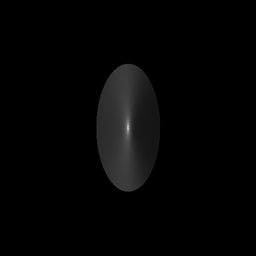 |
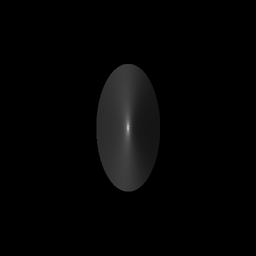 |
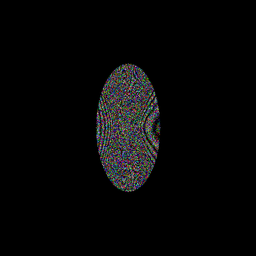
|
- The off by many problem with EHY is probably related to rounding errors with sqrt in OCL for NVIDIA using a different rounding mode (RTE) than X86 (RTP). I tried to use PTX assembly, i.e.
asm("sqrt.rp.f64 %0, %1;" : "=r"(disc) : "r"(disc));, to solve it but no dice. The code won't run. OCL 1.1 and over have no support for setting rounding modes without using inline assembly.
Week 11 : 3 Aug-9 Aug
- Sean applied patches #341 and #346 to SVN trunk.
- Got SVN write access.
- Applied patches #393 and #370 to SVN trunk.
- SVN trunk now has OCL shot evaluation for SPH, EHY, ELL, ARB8, TOR, TGC primitives.
- Refactored SPH (remove duplicate code, etc) and applied it to trunk.
- Move declarations to top level in order to eliminate duplicate code in trunk.
- Pass struct with primitive data to OCL as an initial step to an AoS device primitive database. Move constants into common.cl.
- Generic OCL solid shot handler. Refactored code to remove duplicates.
- Load large OCL vectors on demand to reduce stack footprint per function call.
- Fix memory leak on OCL loaded program source code.
Week 12 : 10 Aug-16 Aug
- Add inclusive and exclusive scan OCL code from PyOpenCL to trunk.
- Created a private branch for opencl.
- M2 commited to opencl branch: kludge up a simple rendering pipeline with grid spatial partitioning traversal acceleration.
- The simple ANSI C rendering pipeline only supports Lambertian reflection with a stock grey material to make things simpler. Example output for goliath.g:
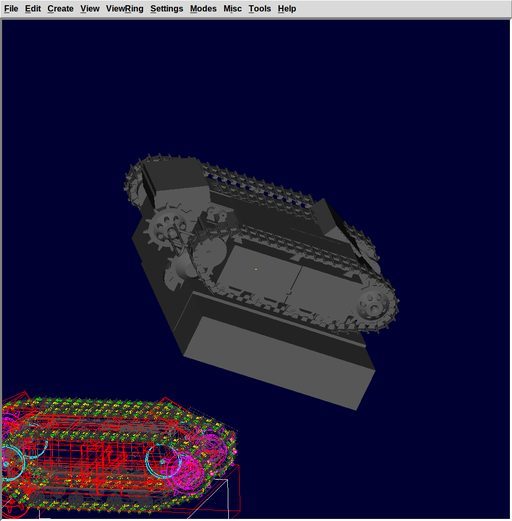
| arb8 |
160
|
| ell |
2
|
| pipe |
10
|
| tgc |
94
|
| tor |
22
|
- We have OCL shot tests for 278 of 288 solids. Only primitive in this database which is not ported yet is pipe.
- For future reference I get these timings for the above scene (one OCL kernel invocation per ray-primitive shot):
- SHOT: cpu = 421.568 sec, elapsed = 447.675 sec
- M4 commited to opencl branch: add device side solid database storage.
- Refactor opencl database storage on opencl branch.
- Backport solid database storage from opencl branch to trunk.
- Simple OCL rendering pipeline which brute force computes all shots and returns a silhouette of the view:
| RT+OCL (Havoc) |
OCL (Havoc)
|
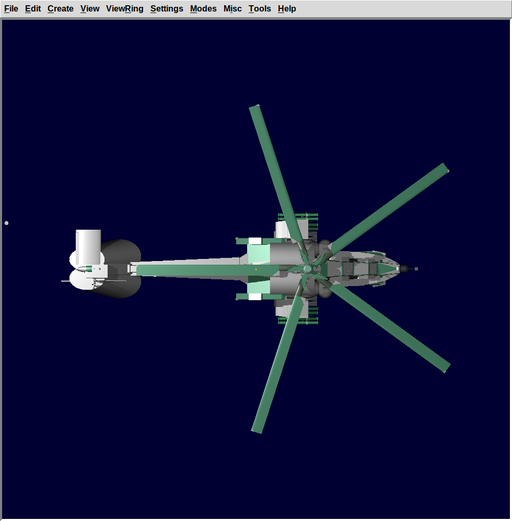 |
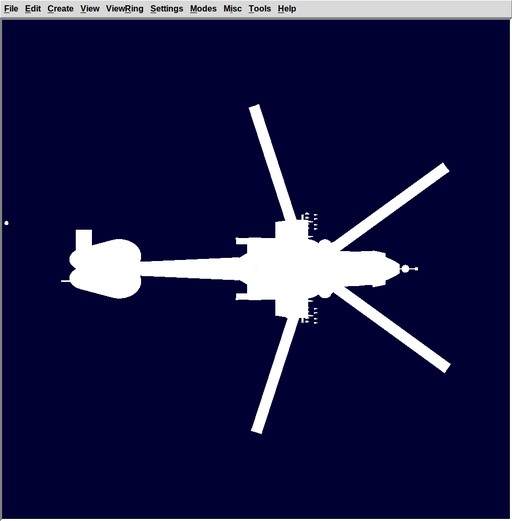
|
| one OCL kernel invocation per shot with BSP spatial partitioning |
OCL brute force computation of all shots (2429 solids, 929232 pixels) in one kernel call
|
| elapsed time: 375.68 sec |
elapsed time: 3.22 sec
|
- This is not an apples to apple comparison since the work done is a lot different. The brute force version ignores the CSG operators. We don't have OCL normal computation. But it's a way to gauge the possibilities here. If we implemented a BVH we could cut the iterations per pixel from 2429 to around log2(2429)*depth complexity where log2(2429)=11.25. In opencl branch.
- PS: The missile launcher tubes don't show up. The tgcs degenerate to recs. So need OCL rec shot to render this properly. Might also be an issue in other scenes.
- Add REC shot routine to opencl branch. Fixes the issues with the havoc missile launchers as seen above.
- Backport REC shot routine from opencl branch to trunk. Add checks for NULL results buffer.
- On hindsight I think the grids are not a good option for BRL-CAD on the GPU. Spatial partitioning can result in duplicate shots. Shots of BRL-CAD primitives can be more expensive than simple ray-triangle shots. The alternative is to use mailboxing like the BRL-CAD ANSI C code currently does but this requires a lot of per thread memory which we can ill afford on a massively parallel architecture like a GPU. So I think we would be better served by object partitioning namely BVHs. Did another literature search to see if I could come up with some papers we could use for the boolean evaluation, BVH construction and traversal.
- I think the first thing to implement should be the boolean evaluator. If we can compute this incrementally this will have a significant impact on memory loads and memory consumption.
- OCL normal computation for arb8, ehy, ell, rec, sph, tgc, tor.
- Backport opencl normal computation for arb8, ehy, ell, rec, sph, tgc, tor to trunk.
- Add diffuse, surface normals rendering light models to opencl branch. Screenshots:
| sphere (surface normals) |
sphere (diffuse) |
havoc.g (surface normals)
|
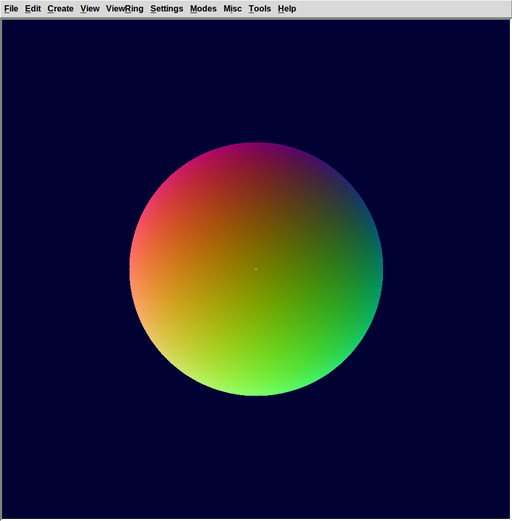 |
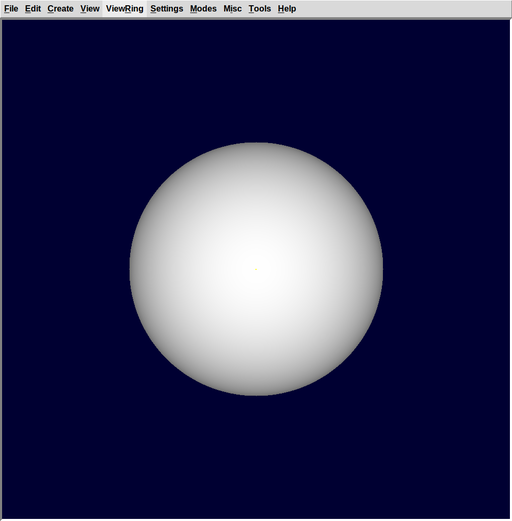 |
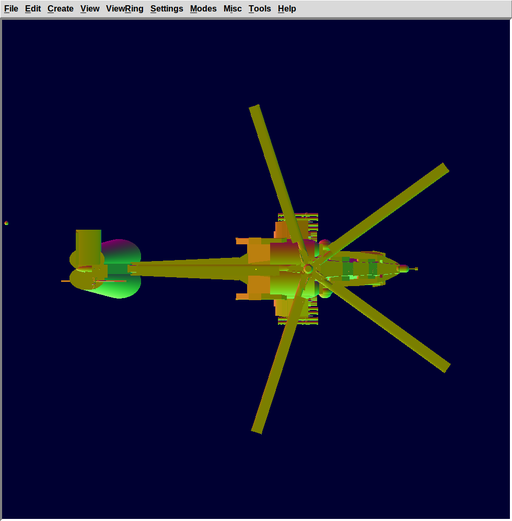
|
| elapsed time: 0.05 sec |
elapsed time: 0.05 sec |
elapsed time: 4.20 sec
|
- Backport diffuse, surface normals rendering light models from opencl branch.








